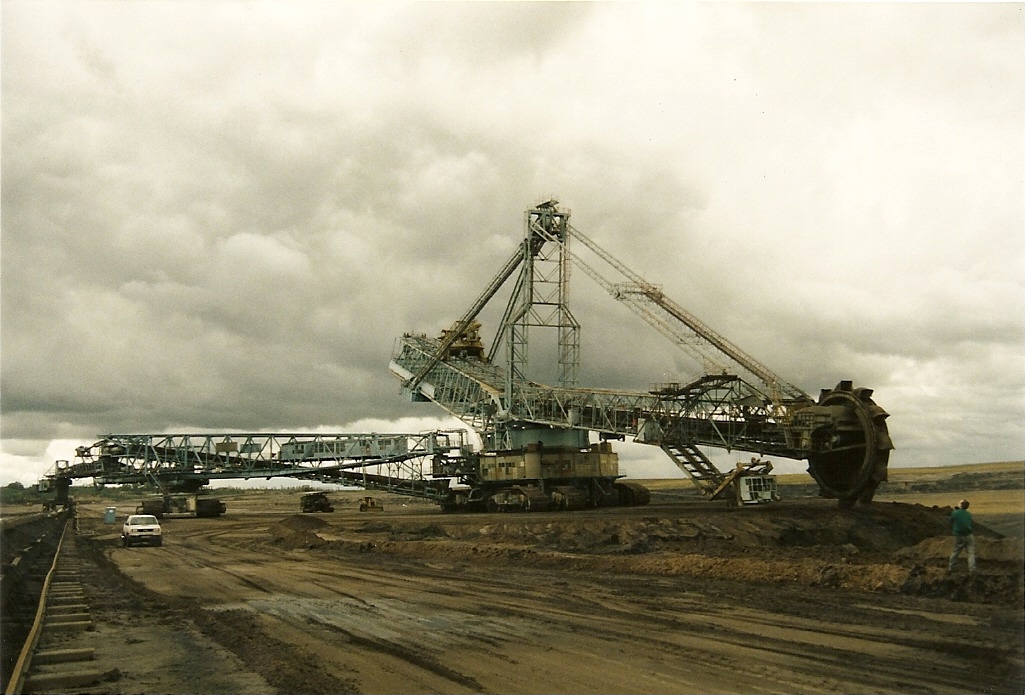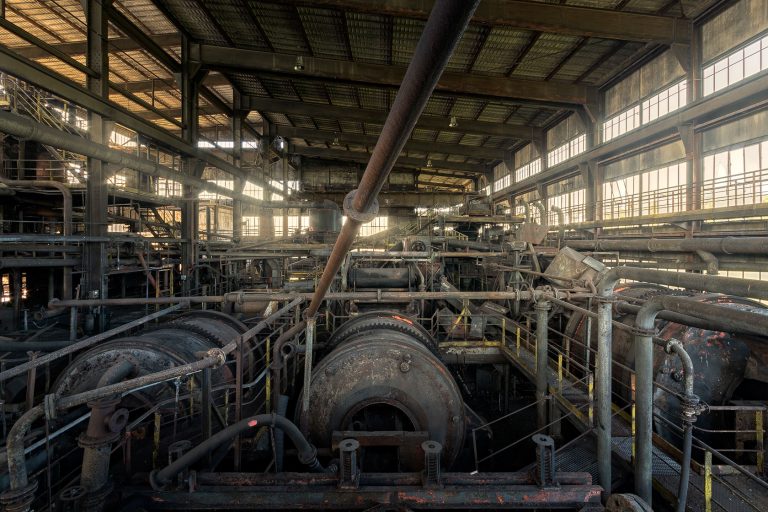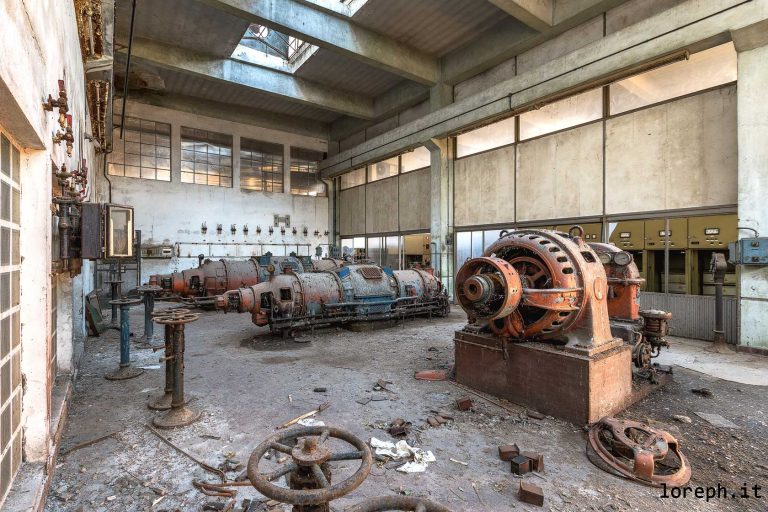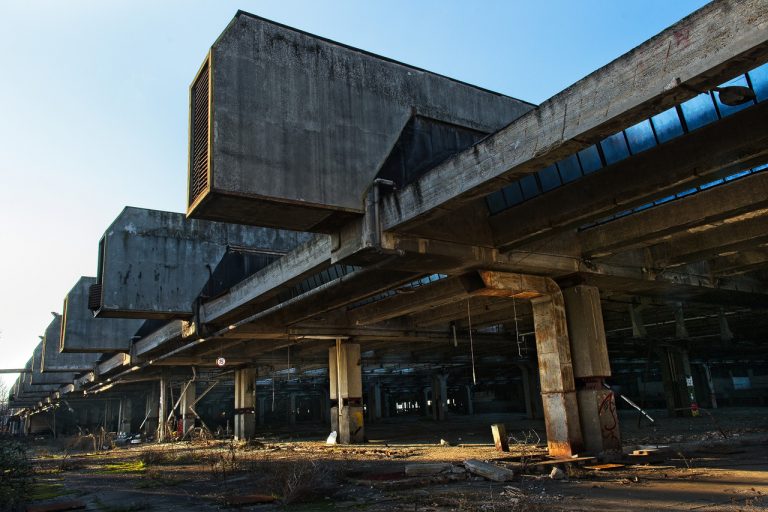THE BLUE WONDER [DE]
Exploration #133. The blue wonder, aka excavator number 1473 (Bagger 1473), designation “SRs 1500”, is a bucket wheel excavator that was manufactured in 1964 in the former DDR by VEB Schwermaschinenbau Lauchhammerwerk and was in use until 2002. Due to its blue colouring, the bucket wheel excavator is also commonly called “the Blue Wonder”. Bagger 1473 is often misidentified as Bagger 258 because of a marking found on its information plate.
Bagger 1473 technical data
The blue wonder had an output of 5555 kW in operation and was supplied with a 6 kV power cable 3×185/3×16.7 mm. In total, the bucket wheel excavator is about 50 metres high and about 172 metres long. The six-section crawler chassis, with a maximum travel speed of 6 metres per minute, carries the total mass of 3850 tonnes. With 10 buckets of 1.5 cubic metres each and 57 pours per minute (known as the pour rate), the excavator achieves a theoretical mining capacity of 5130 cubic metres per hour. The bucket wheel diameter is 12.5 metres and the cutting speed is 3.73 metres per second. The design of the wheel boom with a length of 67 metres enables a removal height of up to 35 metres and a removal depth of up to 15 metres. The SRs 1500 excavator 1473 was the prototype. With the experience gained in planning, assembly and operation, the basis was created for building even larger, more powerful excavators.
The Blue Wonder History
In 1964, the bucket-wheel excavator was installed in the Meuro open-cast mine and subsequently used to remove the overburden until coal mining ceased there in 1999. Between 1999 and 2002, it was still used for recultivation in the former Meuro opencast mine and was then to be scrapped. However, the cities of Senftenberg and Großräschen and the municipality of Schipkau wanted to preserve the excavator and successfully lobbied for it to be taken over. At the beginning of 2019, it became known that the bucket wheel excavator was to be scrapped. After numerous citizens, including former miners, expressed their displeasure at the plans, the Brandenburg State Office for the Preservation of Historical Monuments became aware of the planned scrapping and placed the excavator on the official list of monuments. The municipalities have anyway announced that they would apply to have the blue wonder removed from the list.
(source: Wikipedia. More info: http://www.tagebau-espenhain.de/Landmarke-Bagger-1473-SRs-1500-VR/)






































